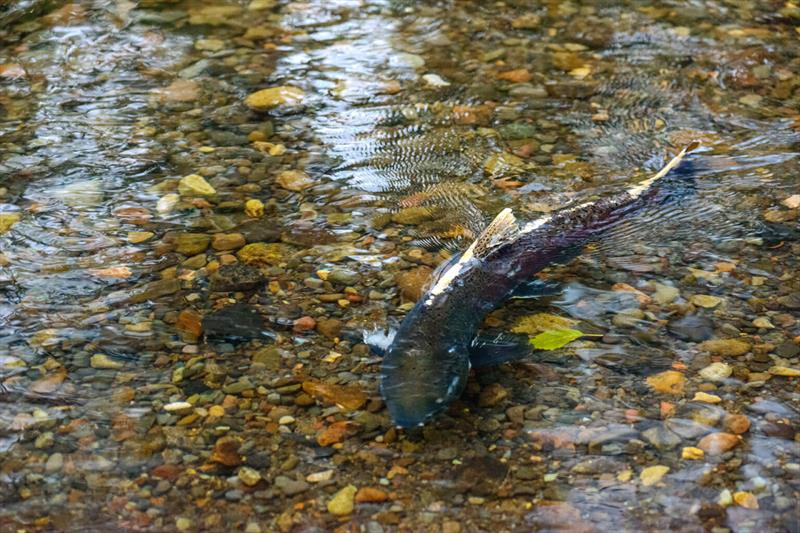
McKenzie River restoration benefiting threatened upper Willamette River Chinook
by NOAA Fisheries 9 Jun 2024 17:54 UTC

Chinook salmon returning to spawn at Finn Rock Reach © Tim Giraudier / Beautiful Oregon
NOAA's Office of Habitat Conservation and partners are increasing numbers of threatened Upper Willamette River Chinook salmon by restoring habitat in Oregon's McKenzie River watershed.
Years of development and road building in the region altered stream flows, limiting the ability of adults to reproduce and juveniles to survive to adulthood.
In 2022, NOAA provided the McKenzie River Trust $1.7 million in congressionally-directed community project funding to restore 150 acres of floodplain habitat at Finn Rock Reach. Adult Chinook spawned in the restored habitat last fall, laying eggs in 65 "redds"—gravel nests they scour out of the river bottom. A new generation of juvenile Chinook is now growing there and will eventually head downstream toward the ocean.
The limited habitat prior to restoration work confined salmon to a small single channel. "We used a cut and fill operation to reconnect the river to the floodplain, dramatically increasing the wetted area where water can flow across the site," says McKenzie River Trust Restoration Projects Manager John Trimble. "We then let the river do the work of rearranging the sediment into preferred flow paths."
Adding fallen trees and other pieces of wood to the river slowed stream flows and created protected pools. They prevented spawning gravels and juvenile fish from being washed downstream.
More recently, the Office of Habitat Conservation awarded the McKenzie Watershed Alliance $7.6 million through the Bipartisan Infrastructure Law and Inflation Reduction Act. They will use the funds to restore lower Quartz Creek, a tributary of the McKenzie. Historical accounts document the presence of Chinook salmon and bull trout in Quartz Creek, but neither species has been seen there for decades.
Project partners have replaced an aging bridge that constricted Quartz Creek. Previously, the stream constriction forced the water to gush like a fire hose, blasting salmon and sediment downriver. "Slowing down the water flow will keep juveniles from being flushed out and help keep spawning gravels in place," says NOAA Marine Habitat Resource Specialist Larissa Lee. "Salmon need a certain size gravel to cover and protect their eggs."
Next, the partners will restore floodplain habitat around the creek. Floodplains give juvenile salmon a place to escape fast-moving winter flows and provide access to highly nutritious organic matter and insects. The floodplain absorbs excess water during winter storms and increases groundwater connectivity throughout the watershed, keeping the river flowing through the summer months.
The 2020 Holiday Farm Fire severely impacted the watershed, resulting in increased flooding and significant erosion. Higher levels of sediment made it harder for fish to breathe and decreased water quality for downstream residents. Eugene and other cities rely on the McKenzie River for drinking water.
The restoration work will increase groundwater and expand the amount of wetlands, which can reduce the impact of forest fires. Crews will place felled trees and other woody debris in the creek to further slow and spread the water. The log jams will act like sieves to filter sediment so it drops out.
"When you have a single-threaded river that doesn't function naturally, fire just runs right through it," says Eli Tome, Director of Conservation for the McKenzie River Trust, a project partner. "However, when you restore the natural processes of a river and reintroduce wetlands you create a natural fire break and provide refuge for wildlife trying to escape."
Additional partners for both projects include the McKenzie Watershed Council, U.S. Forest Service, and Eugene Water & Electric Board.
NOAA's Office of Habitat Conservation is reinvigorating efforts to restore threatened salmon and trout species in Oregon's Willamette River watershed. This is one of four related restoration projects being funded under the Bipartisan Infrastructure Law and Inflation Reduction Act in this area.